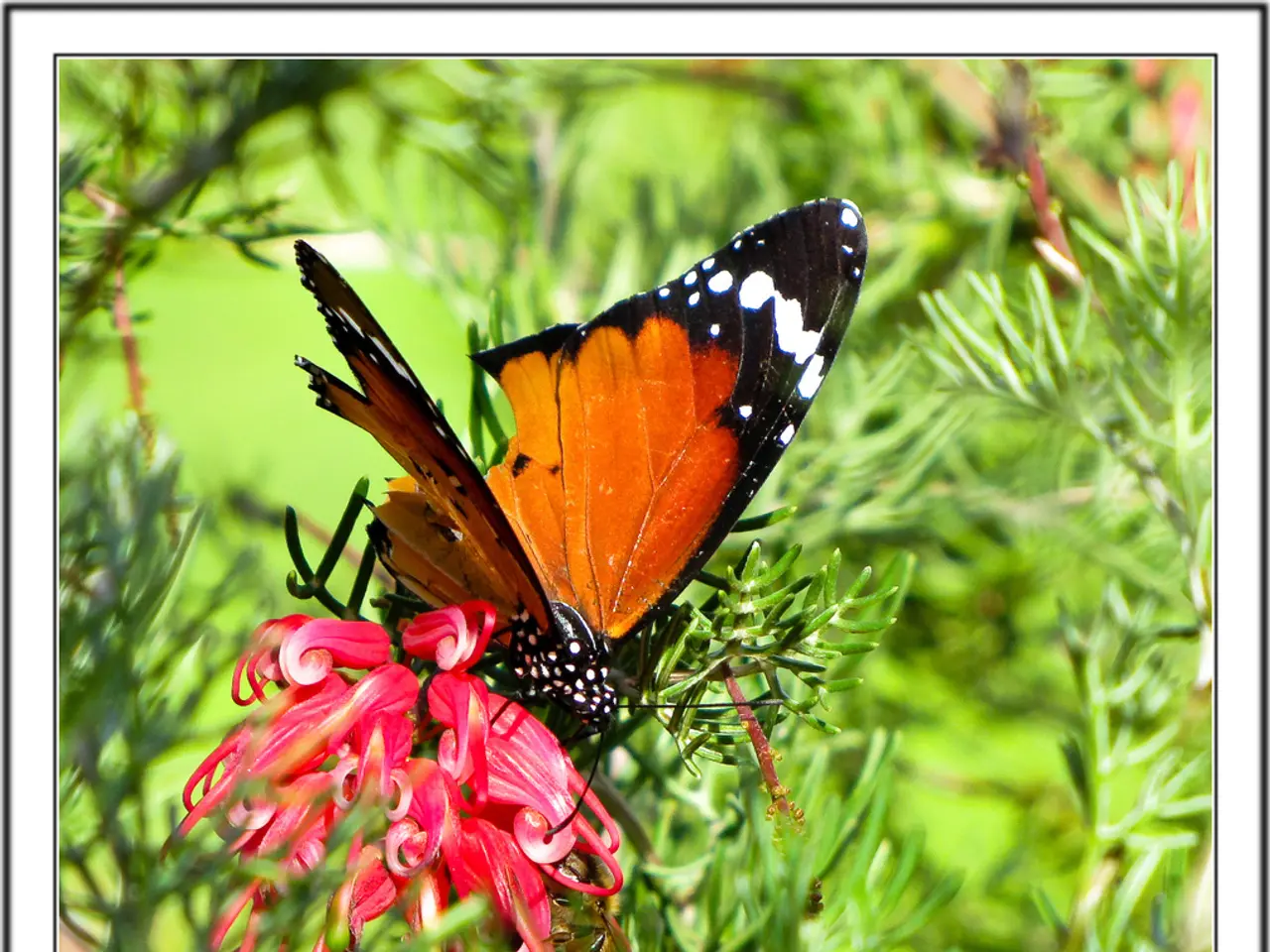Beware! Keep an eye out for the striking Jersey Tiger moths in your local parks and gardens.
In the heart of the UK summer, a remarkable increase in the sightings of the vibrant Jersey Tiger moth has been observed, marking a significant shift in the country's wildlife landscape. According to Dr. Richard Fox, the head of science at Butterfly Conservation, there has been a 78% increase in Jersey Tiger moth sightings in 2025 compared to 2024.
This surge has seen the moths expanding their range beyond their traditional habitats in the Channel Islands, south coast of England, London, and southeast Wales into East Anglia and the Midlands. The Butterfly Conservation charity attributes this expansion to warmer, drier weather conditions linked to climate change, which have created favourable environments for the species to settle in areas where they were previously rare or absent.
While insect declines in general have been associated with habitat loss, fragmentation, and pesticide use, the Jersey Tiger moth specifically seems to be benefiting from the recent climatic conditions rather than suffering from habitat loss. No direct link has been made between habitat loss and the increase of Jersey Tiger moths; instead, the increase contrasts with the overall decline seen in many insect populations caused by habitat degradation.
The annual butterfly count, organised by Butterfly Conservation, is currently underway until August 10. Participants spend 15 minutes recording butterflies they see in their garden, parks, or countryside. Data collected by the public during the Big Butterfly Count directly informs national conservation strategies, helping protect not just butterflies and moths, but the wider ecosystems they support.
Dr. Fox emphasised that one good year cannot undo the long-term decline many species are facing. He reminded us that damage to butterfly habitats, climate change, and the use of pesticides are contributing factors to the decline of butterfly species. The Big Butterfly Count numbers plunged to record lows last year due to cool, wet conditions.
This year, Butterfly Conservation is urging people to take part in a "nationwide rescue mission" for the UK's ailing butterfly species. As of the mid-way point of the count, 5,300 Jersey Tiger moths have been recorded, compared to 3,496 for the whole of last summer's count. The public is being encouraged to look out for the Jersey Tiger moths, recognisable by their black and white tiger stripe forewings and vibrant red-orange or yellow hindwings adorned with bold black spots.
The Jersey Tiger moths were largely restricted to the Channel Islands, the south coast of England, London, and south-east Wales just a decade ago. The warm, sunny conditions this summer have created a more favourable environment for butterflies and moths compared to last year's cool, wet season. However, Dr. Fox cautioned that the increase in Jersey Tiger moths is primarily related to climate change-driven shifts in temperature and weather patterns, and not a sign of a full recovery for the UK's butterfly populations.
In summary, the increase in Jersey Tiger moths is primarily related to climate change-driven shifts in temperature and weather patterns, facilitating their spread, while habitat loss does not appear to currently limit or reduce their recent population growth in reported areas. Public participation in recording sightings during annual surveys like the Big Butterfly Count has been crucial in documenting this trend and informing conservation efforts.
- The expansion of the Jersey Tiger moths beyond their traditional habitats might be attributed to the rise in environmental science relating to climate change, which has resulted in warmer, drier weather conditions that offer favorable environments for the species.
- Despite the surge in Jersey Tiger moth sightings in 2025, it is essential to note that these recent climatic conditions do not address the long-term decline many other species are experiencing due to factors such as habitat loss, climate change, and pesticide use.
- The observation of the Jersey Tiger moth in previously rare or absent areas of East Anglia and the Midlands, as a result of climate change-driven shifts, has sparked an interest in gardening these regions, as home and garden enthusiasts aim to help maintain this growing population of environmental-science-focused species.



